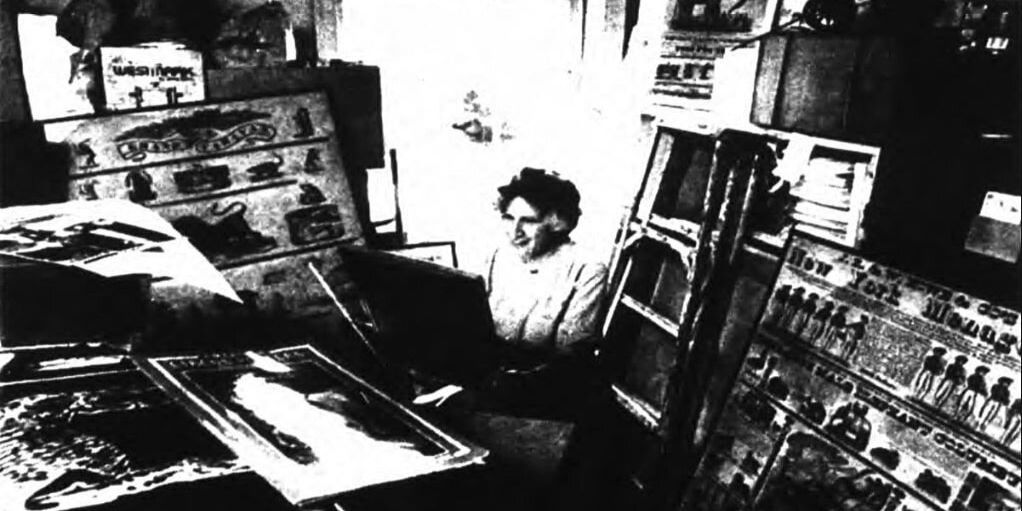Mabel Addis Was The First Video Games Writer You’ve Never Heard Of
Commemorating her incredible achievements on International Women’s Day.
You Are Reading :Mabel Addis Was The First Video Games Writer You’ve Never Heard Of

Back when video games had yet to seep into public consciousness in 1964, there was a text-based game called The Sumerian Game, a text-based economic simulator about managing your resources as the rulers of Lagash in Sumer. It was also written and designed by Mabel Addis, a fourth-grade teacher who wanted to impart the basics of economic theory to her class. But it’s a pity that few have heard of her: she’s also widely considered as the first female video game designer, as well as the very first video game narrative designer of any gender, pioneering several features—such including narrative elements, cutscenes and even content patches—that can still be seen in modern titles.
The Sumerian Game has its roots in an initiative by IBM researchers and the Board of Cooperative Educational Services (BOCES) of Westchester County, New York to discuss the potential of using games for educating students. While it was IBM’s Bruse Moncreiff who proposed using an ancient Sumerian civilisation as a setting for a game, it was Addis who expanded on this idea to turn it into an economic model of a civilisation, having studied about Mesoptamian civilisations back in college. But The Sumerian Game wasn’t a title played by thousands of players on personal computers everywhere; that wasn’t a commercial technology that was accessible to the wider public then. Instead, this could only be experienced on an early IBM mainframe computer, where players—which were essentially sixth-grade students—had to take turns to play.
How this game was experienced is this: prompts from the mainframe computer had to be printed out on pieces of paper, with the students keying in their responses back to the mainframe via a keyboard. Monitors, at that time, weren’t a thing yet, so students were introduced to this virtual world via a slide projector that would display images—even playing audio lectures—of the discussions by the king’s cabinet, as well as news bulletins that function as economic reports for your achievements. In other words, it’s also the very first cinematic cutscene.
While limited, this setup was still able to convey several scenarios, such as details about the city’s current population, acres of farmland, number of farmers, and amount of grains and other resources that were harvested and stored. In particular, the computer also conveys all this information playing the role of the court advisor, immersing the player with lines such as “Forgive me if my questions seem simple. It is my duty to urge you to see the relationship among the items in your Steward’s reports.” These are advances in a burgeoning games circle—not quite yet an industry—where games were mostly simple, straightforward affairs, such as playing tic-tac-toe against an artificial intelligence, or titles like Mouse in the Maze, which is about designing a maze for a mouse to run through.


And as players progress through the game, there were even more complex scenarios—or levels—to complete. They could conduct research, so as to accelerate the technological innovations so as to better feed the population and grow the city, or manage resources for a prospering city, with later scenarios even including trade and expansion options. Later in 1966, Addis revisited and rewrote the script, tweaking it such that gameplay was less repetitive and reducing the number of rounds to just 30. The game was later remade and renamed Hamurabi, which is widely regarded as the progenitor of the city-building simulators like Civilization.
Addis, however, would barely receive much mainstream recognition for her monumental work until much more recently, when games researcher Kate Willaert wrote a Twitter thread detailing Addis’ achievements in 2019. Unfortunately, there’s very little of what remains of the original game—some slides of the game are archived at the Strong Museum of Play—but the least we can do is to commemorate Addis’ legacy, and how she blazed a burning trail for the games industry as one of the most inventive game designers. In an era where games were far from mainstream, Addis’ innovations would eventually pave the way for other early and celebrated game visionaries such as Carol Shaw, Roberta Williams, and Reiko Kodama.
Link Source : https://www.thegamer.com/mabel-addis-first-video-games-writer-international-women-day/
